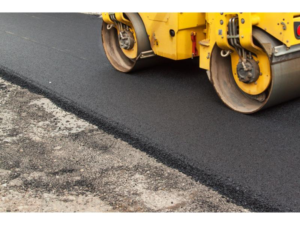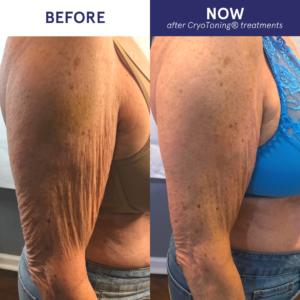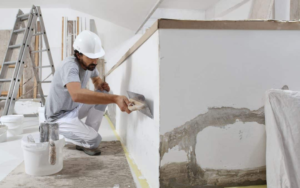Identifying pests is the first step in any pest management plan. Prevention involves removing their food, water and shelter or blocking access to them.
Traps can be as simple as putting out a dish of water to lure pests, or as complex as deploying microscopic nematodes like the roach-eating Steinernema carpocapsae to disrupt insect populations. Contact Pest Control Sparta NJ now!

Pest identification is the first step in developing an effective pest control program. Correct identification reveals information such as what the pests feed on, their life cycle and time of activity, and the environmental conditions that favor their development and growth. This information can be used to develop more targeted control methods that eliminate the pests without damaging people or collections.
Pests can be found throughout the museum environment and are often difficult to identify. Many pests can be distinguished by specific physical characteristics, such as their shape, size and color; the length of their antennae; the shape and color of their eggs; or particular markings on their bodies. These features can also be useful in distinguishing different species within the same family of pests.
Identifying a pest is also essential to the proper use of a pesticide. Sometimes pesticide applications fail to control a pest because the pests were not identified correctly or the pesticide was applied at a time when it was ineffective against the specific pest.
To assist with pest identification, a number of online resources have been developed by the MuseumPests Working Group. These include a gallery of reference images, and Pest Fact Sheets, an easy-to-read handout for the most common museum pests, as well as links to additional pest identification aids. When using these online resources, be sure to use multiple sources to confirm the pest identification.
A professional pest control service can provide accurate pest identification and help a museum establish the most effective control measures for a particular problem. They can advise on the best preventive measures, including sealing entry points and minimizing attractants, as well as providing treatment services to eradicate existing infestations of pests.
When selecting a pest control company, look for a certified pest management specialist who can offer you a free estimate and a detailed description of their services. Shop around and ask for recommendations from friends and colleagues. Compare recommended treatment programs, prices and warranties among companies. The more knowledge you have about your pest problems, the more effectively you can work with a professional to develop a successful pest management program.
Pest Prevention
Pests cause damage to property and can spread disease. Some such as rodents and cockroaches also pose a health hazard if their droppings are inhaled. They can chew through electrical wires causing fires, or leave sticky residues that can trigger asthma attacks.
There are three steps to effective pest control: prevention, suppression and eradication. Prevention involves preventing pests from gaining entry to facilities or spreading within them. This can be accomplished by keeping facilities clean, reducing clutter and removing food sources or hiding places for the pests. Sealing cracks and gaps with caulk can also prevent pests from entering. In addition, installing door sweeps and replacing old weather stripping can help. Regular garbage disposal and storing food in airtight containers can further deter pests from making buildings their home.
Another approach is utilizing biological methods to control pests such as nematodes, bacteria and viruses that can kill or inhibit the development of a pest’s offspring. These methods don’t use chemicals and are often more environmentally friendly than other approaches. However, they can take some time to work and are typically only feasible for small infestations.
Controlling pests can be a complicated task. It’s important to understand their role in the environment and not view them as a nuisance or something to be eradicated. There are natural forces at work that affect all organisms including pests, and controlling them may not be in the best interest of humans.
The goal of a pest management program should be to reduce the number of pests to an acceptable level without causing unacceptable harm to the environment. It’s also a good idea to communicate with customers about the prevention of pests, such as advising them to remove food scraps from their premises before leaving or to wipe down kitchen benches. This can make it easier for them to implement the pest management strategy you have devised together. This will save them money in the long run and help protect their investments. It will also ensure they are getting the most value for their money from their pest control service provider.
Pesticides
A pesticide is any substance that kills or controls insects, rodents or other organisms that damage or interfere with food production or other activities. Pesticides include insecticides, fungicides, herbicides and rodenticides. The first step in selecting a pesticide is to correctly identify the problem. Then select a pesticide that is safe and effective for your situation.
The most dangerous of pesticides are those that are absorbed by the skin, inhaled or ingested. Wearing rubber gloves, eye protection and a long-sleeved shirt, pants and closed shoes can help reduce exposure. Before using a pesticide, read the label carefully and follow all instructions and precautions. If you are not sure what the proper use of a pesticide is, ask an Extension agent or visit a website for help.
Most pesticides are designed to affect only the target organism. However, if the spray drifts or volatilizes from the treated area, it can contaminate air, soil and non-target plants and animals. These contaminated organisms can be poisoned or die, and may enter the food chain, affecting other animals that consume them.
To reduce environmental exposure, avoid surface sprays in heavily used areas and apply spot treatments to the affected area. Also, removing clutter can help control pests. Clutter provides places for them to breed, hide and gain access. Also, caulk cracks and crevices around baseboards and cabinets and replace rotting boards. Also, keep children and pets away from the treated area until the sprays have dried or dusts have settled.
If you must use a pesticide, choose one that is least hazardous to the environment. Some pesticides take weeks to break down and disappear, leaving toxic residues that can harm the environment and humans. Also, use bait stations for ants or rodents, or trunk treatments for some insect problems, instead of widespread spraying.
When using pesticides, never apply more than the amount specified by the label. Overuse is wasteful, environmentally hazardous and financially irresponsible. It can also result in resistant insect populations that will require more and more pesticide to control them. Also, wash your equipment in a way that will not allow the rinse water to flow into gutters, storm drains or open waters.
Prevention Tips
Taking preventative measures to eliminate potential pest sources of food, water and shelter is the most effective way to stop pest infestations before they get out of hand. For commercial facilities, this includes ensuring that communal areas are clean and free of spills or crumbs that can attract cockroaches or rodents, as well as keeping product storage shelves, lockers and worktables tidy. For homes, it means keeping garbage cans tightly-covered and emptying them regularly, and avoiding stacks of newspapers or cardboard that can serve as nesting sites for pests like cockroaches or mice.
The best prevention strategy is also the simplest: Make sure doors and windows are closed as much as possible, especially when you’re not at home or in the office. This stops pests from entering through cracks or gaps, and it also cuts down on energy costs.
Another important preventative step is to seal any cracks or larger openings in walls, foundations and siding joints, as well as around water, cable and phone lines, and near kitchen vents. This helps to keep moisture-loving pests like silverfish, earwigs and centipedes at bay.
Finally, it’s a good idea to keep wood piles away from the house, as these can provide a highway for rodents and other pests to gain access into the structure. Also, regularly trim back shrubs and tree limbs that hang over the house, as they can give pests easy runways to get inside.
Finally, be sure to properly store all outdoor items, such as toys and furniture, away from the exterior of the building, and to thoroughly wipe down any planters that are kept outdoors. And indoors, encourage everyone in the office to limit their snacking times and to clean up their personal belongings – particularly food items – after leaving the break room. The crumbs that accumulate under desks and in other common areas are an invitation to many pests, including ants, fruit flies, beetles and rats. Likewise, be sure that trash bins are always fully-emptied, and check for and repair leaky pipes. In addition, regular maintenance and cleaning of drainpipes, gutters, eaves and roof valleys can help prevent pest infestations.








